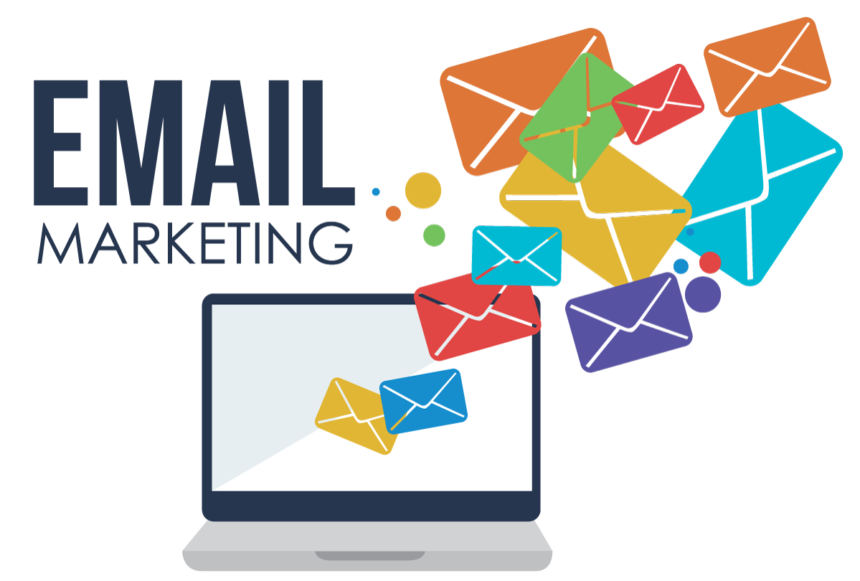Introduction
In the fast-paced world of digital marketing, businesses are continually seeking innovative ways to connect with their audience, build relationships, and drive revenue. Amidst the rise of social media, content marketing, and search engine optimization (SEO), one powerful tool remains a cornerstone of effective digital marketing strategies: email marketing. In this article, we’ll delve into the importance of email marketing, its key benefits, best practices, and how businesses can leverage this versatile tool to achieve their marketing objectives and drive growth.
The Power of Email Marketing
Email marketing remains a fundamental and highly effective strategy for businesses to engage with their audience, nurture leads, and drive conversions. With over 4.6 billion email users worldwide and an average return on investment (ROI) of $42 for every dollar spent, email marketing offers unparalleled reach, targeting capabilities, and measurable results.
Direct Communication Channel: Email provides a direct and personalized communication channel between businesses and their audience, allowing brands to deliver targeted messages, promotions, and updates directly to subscribers’ inboxes. Unlike social media or advertising platforms, email marketing gives businesses full control over their messaging and audience engagement.
Audience Segmentation and Targeting: Email marketing enables businesses to segment their audience based on demographics, behaviors, preferences, and purchase history, allowing for highly targeted and relevant communication. By tailoring content and offers to specific audience segments, businesses can increase engagement, conversions, and customer satisfaction.
Cost-Effective and High ROI: Email marketing is one of the most cost-effective digital marketing channels, requiring minimal investment compared to traditional advertising methods. With low overhead costs and high conversion rates, email marketing offers an impressive ROI, making it an attractive option for businesses of all sizes and budgets.
Measurable Results and Analytics: Email marketing platforms provide robust analytics and reporting tools that allow businesses to track key metrics such as open rates, click-through rates, conversion rates, and revenue generated. By analyzing these metrics, businesses can gain insights into audience engagement, campaign performance, and areas for improvement.
Automation and Personalization: Email marketing automation tools enable businesses to streamline and scale their marketing efforts by automating repetitive tasks, such as welcome emails, follow-up sequences, and abandoned cart reminders. Personalization features allow businesses to deliver targeted and relevant content to subscribers based on their interests, behaviors, and interactions.
Relationship Building and Customer Loyalty: Email marketing plays a crucial role in building and nurturing relationships with customers over time. By delivering valuable content, exclusive offers, and personalized recommendations, businesses can foster trust, loyalty, and brand advocacy among their audience, leading to repeat purchases and long-term customer relationships.
Best Practices for Email Marketing Success
To maximize the effectiveness of email marketing campaigns, businesses should follow best practices and strategies that align with their goals and audience preferences. Here are some key best points to consider:
Build a Quality Email List: Start by building a permission-based email list of subscribers who have opted in to receive communications from your business. Offer incentives such as exclusive discounts, content downloads, or contests to encourage sign-ups and ensure that subscribers are engaged and interested in your content.
Segment Your Audience: Segment your email list based on demographics, interests, purchase history, and engagement levels to deliver targeted and relevant content to different audience segments. Use segmentation to tailor content, offers, and messaging to specific audience preferences and behaviors.
Create Compelling Content: Develop high-quality and engaging content that provides value to your subscribers and encourages them to take action. Use a mix of educational content, promotional offers, storytelling, and interactive elements to keep subscribers engaged and interested in your emails.
Optimize for Mobile Devices: Ensure that your email campaigns are mobile-friendly and optimized for viewing on smartphones and tablets. Use responsive design, clear calls-to-action, and concise formatting to make it easy for subscribers to read and interact with your emails on any device.
Test and Iterate: Continuously test different elements of your email campaigns, such as subject lines, send times, content, and design, to optimize performance and maximize results. Use A/B testing to compare different variations and identify what resonates best with your audience.
Monitor and Analyze Results: Track key metrics such as open rates, click-through rates, conversion rates, and revenue generated to evaluate the performance of your email campaigns. Use analytics data to gain insights into audience behavior, identify trends, and make data-driven decisions to improve future campaigns.
Case Studies: Real-World Examples of Email Marketing Success
To illustrate the effectiveness of email marketing, let’s explore two real-world case studies of businesses that have achieved significant results through strategic email marketing campaigns:
Company A: E-commerce Retailer
Company A is an e-commerce retailer specializing in fashion apparel and accessories. To drive sales and increase customer loyalty, Company A implemented a series of email marketing campaigns targeting different segments of their audience. They segmented their email list based on past purchase behavior, product preferences, and engagement levels.
By sending personalized product recommendations, exclusive offers, and targeted promotions to each segment, Company A was able to increase email open rates by 25%, click-through rates by 30%, and conversion rates by 20%. In addition, they saw a 15% increase in repeat purchases and a 10% increase in customer lifetime value as a result of their email marketing efforts.
Company B: B2B Software Provider
Company B is a B2B software provider offering cloud-based productivity solutions for businesses. To generate leads and nurture prospects through the sales funnel, Company B implemented an email marketing automation workflow targeting different stages of the buyer’s journey. They created a series of educational content, case studies, and product demos tailored to the needs and interests of their target audience.
By sending targeted emails at key touchpoints in the buyer’s journey, Company B was able to increase lead generation by 40%, shorten the sales cycle by 20%, and improve lead-to-customer conversion rates by 15%. In addition, they saw a 25% increase in customer satisfaction and retention as a result of their email marketing efforts.
Conclusion
Email marketing remains a powerful and cost-effective strategy for businesses to connect with their audience, drive engagement, and achieve their marketing objectives. By leveraging the direct communication channel, targeting capabilities, and automation features of email marketing platforms, businesses can deliver personalized and relevant content to subscribers, nurture leads through the sales funnel, and drive conversions and revenue. By following best practices, monitoring results, and continuously optimizing campaigns, businesses can unlock the full potential of email marketing and achieve long-term success in today’s competitive digital landscape.







